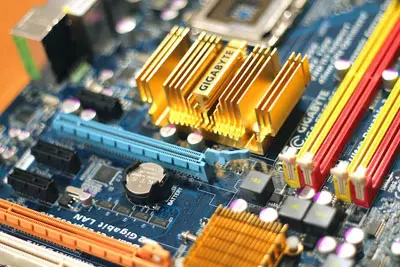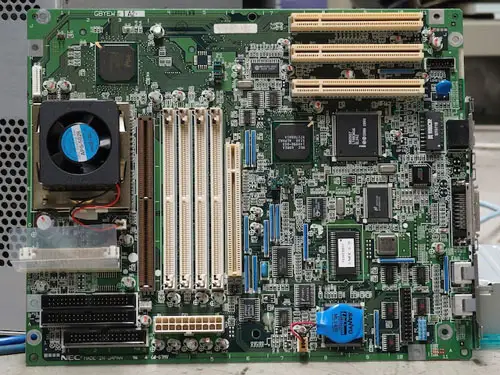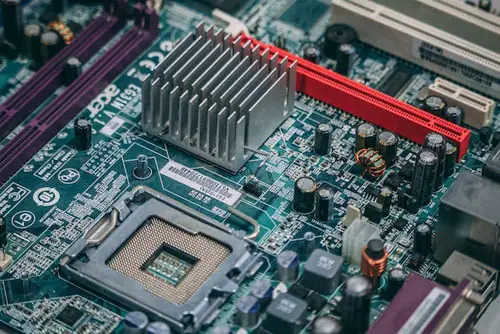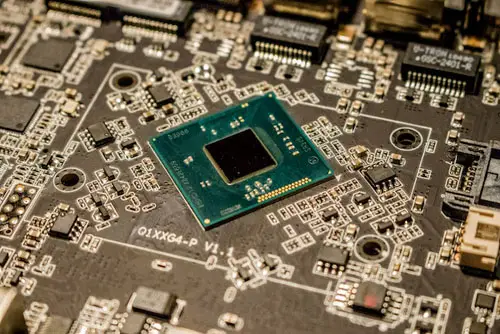
If you're wondering whether you have a faulty motherboard, there are several signs to look out for. A computer that doesn't turn on at all, has visible signs of damage to the board, fails POST (Power On Self Test), or keeps giving blue screens of death (BSOD), might be dealing with a bad motherboard. However, to be sure, proper troubleshooting is key.
A colleague of mine has been using his home PC for over 10 years. One day, he came to me saying that it refused to turn on ever since it gave a BSOD. I went to check his PC the next day, and after about an hour of troubleshooting, I was convinced the motherboard was fried. There were several things pointing to this conclusion.
Are you in a position where your computer isn't working properly, no matter what solutions you try? Your motherboard might be bad. It can be helpful to learn how to tell if that's the case. That's what this basic guide is for. Let's get right into what you need to know.
Contents
Hardware failure of your motherboard is one of the most dreaded causes of a computer that isn't working right. There's usually very little you can do about a bad motherboard, besides replacing it.
Replacing your motherboard can be a major inconvenience, so it is important to be sure that your motherboard is the problem before ordering a new one.
The different sections below will outline some of the common signs you can use to tell if your motherboard is the problem. However, keep in mind that this can be difficult to determine, as many of these symptoms can be caused by other components failing.

One of the most common signs of a dead motherboard is when your computer turns off suddenly and refuses to switch back on.
A motherboard problem like this can also be caused by other hardware components misbehaving, such as a faulty power supply or an overheating CPU.
When your CPU overheats, your computer will shut off automatically, as a fail safe to allow it to cool down to acceptable temperatures. However, it will usually turn back on once you push the power button, especially after giving it a bit of time.
In the case of a power supply unit going bad, you will probably need to test it on another PC and see whether it can power it. If so, your motherboard is probably bad.
The Blue Screen of Death, or BSOD is perhaps the most common indication given by the Windows operating system that there's a hardware or software-related problem forcing the computer to shut down.
A BSOD error can be caused by several components that are too numerous to list. The good thing is that you should see an error code with each BSOD that your computer shows.
Simply Google this code to see what the error message means. It may potentially point you to the component causing the problem. Common bug codes that may potentially mean motherboard failure include 0x124 (WHEA_UNCORRECTABLE_ERROR) and 0x101 (CLOCK_WATCHDOG_TIMEOUT).
Many motherboard manufacturers include LEDs on their motherboards that serve as indicators for errors.
These diagnostic LEDs can light up when there are issues with components on the motherboard, such as the CPU, GPU, the CMOS battery, and even the motherboard itself.
If you have a modern motherboard model, it likely has multiple LEDs which indicate different hardware errors. You can reference your motherboard manual to know what any glowing LEDs are trying to tell you.
The BIOS is the barebones software that runs on every motherboard. Even when you don't have a hard drive connected to a motherboard, you will still be able to access the BIOS settings.
Every time you turn on your computer, the BIOS runs a series of tests on all the components in the computer. This test is known as the Power On Self Test, or POST. This is one of the first things your computer does before booting.
When there are any motherboard failures or problems with the computer hardware, your computer is likely to fail POST. You will also hear different beep codes depending on the exact problem.
A beep code can provide more information on what is causing the problems on your computer. However, you will need to reference the user manual for your motherboard to know more about these error codes. You can do an online search as well.
Some motherboards have a beep code that will point you directly to a failing motherboard.

In the event of power surges or electrical spikes, the amount of electricity sent to your motherboard can cause damage, such as blown capacitors, chipped circuits, or leaking capacitors.
When this kind of damage happens, you will usually see it with the naked eye. This may be a black spot that looks sooty or charred, a capacitor that is bulging, and so on.
If you notice this on your motherboard and your computer problem persists, this is likely the cause.
A lot of motherboards come with first-party diagnostic software that point you to various problems they could have. This can save you a trip to the repair shop and let you know if the motherboard is the component causing your computer to act wonky.
Of course, you typically can't use this software if your computer won't switch on at all, but for those who can get it on in the first place, this can work.
Check to see if your motherboard manufacturer has software that you can use to diagnose hardware issues. If not, you can use a tool like PC Doctor. Follow the steps below to use it for diagnostics:
The easiest way to tell if a bad power supply unit is the cause of your system issues, or whether it is the motherboard, is to swap the PSU into another computer and see whether it works as normal. Alternatively, you could use another PSU in the same PC case.
However, not everyone has spare parts lying around that they can use to troubleshoot. If this is the case, you can use other basic means to narrow things down.
Several things can cause your motherboard to go bad. They include any of the following:
If you have a new computer or your motherboard was just purchased recently, you may be able to get it replaced under warranty. Send it back to the manufacturer or store you bought it from.
While it is theoretically possible to replace a single burnt capacitor, it usually isn't worth it. The entire motherboard will typically need to be replaced.

When motherboards go bad, the symptoms on your computer tend to be similar to those that various components show. However, with proper troubleshooting skills, you can determine whether your motherboard is dead or not.
A computer that turns off suddenly and doesn't turn back on, gives a diagnostic beep code that indicates motherboard failure, a motherboard that doesn't pass POST, or one with visible physical damage, can all point to the failure of the motherboard in your PC. The best thing is to take it to a repair shop, where they have the best tools for accurate diagnosis.
We hope this article helped you figure out the problem with your motherboard. Take a look at our related articles for more computer tips and fixes.
